▼
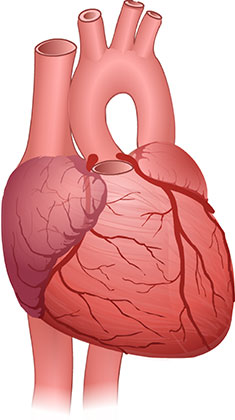
Introduction
Like any other muscle of the body, the heart needs a constant blood supply to stay healthy.
It may seem like the heart has easy access to lots of blood. However, the blood passing through the chambers of the heart does not actually supply oxygen and nutrients to the heart muscle. Instead, special blood vessels, called coronary arteries, branch off of the aorta and deliver blood into the heart muscle itself. If there is a problem with the coronary arteries, the heart muscle will not get enough blood, and the heart will not be able to work properly.
Select the name of the blood vessel from the list below to see a picture and a description of what it does.
Press the “BACK VIEW” button to see the view of the heart from the back.
Right
Left
Aorta
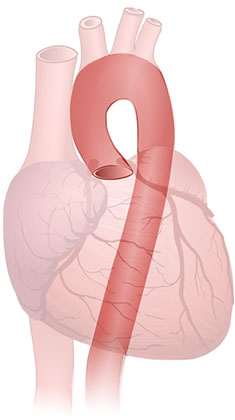
Aorta: The largest artery in the body. The aorta carries oxygen-rich blood away from the heart, to the rest of the body.
Anterior Descending Coronary Artery (Left)
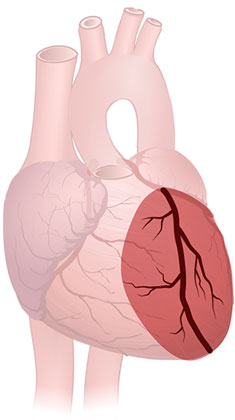
Anterior Descending Coronary Artery (Left): A branch of the left coronary artery that carries blood to the septum and the front (anterior) wall of the heart.
Circumflex Artery
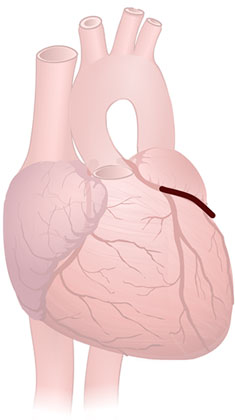
Circumflex Artery: A branch of the left coronary artery that carries blood to the left wall of the left ventricle.
Coronary Artery (Left) (Main Stem)
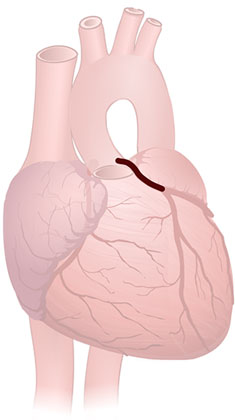
Coronary Artery (Left) (Main Stem): Blood vessel that originates from the aorta and then divides into anterior and circumflex branches.
Coronary Artery (Right)

Coronary Artery (Right): Blood vessel that carries blood to the front (anterior) right side of the heart, and, usually, to the back (posterior) of the heart.
Inferior Vena Cava
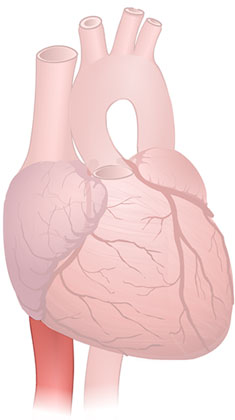
Inferior Vena Cava: A large vein that delivers deoxygenated blood from the lower body into the heart.
Pulmonary Arteries
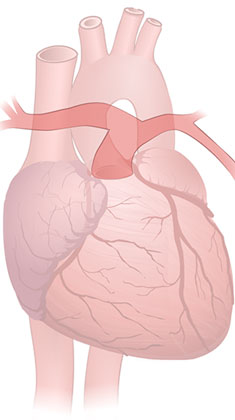
Pulmonary Arteries: Blood vessels that carry deoxygenated blood from the heart to the lungs.
Superior Vena Cava

Superior Vena Cava: A large vein that delivers deoxygenated blood from the upper body into the heart.
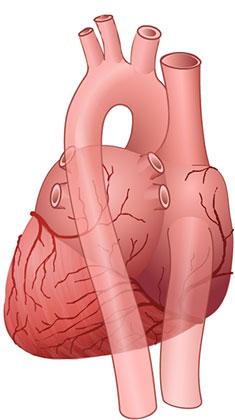
Introduction
Like any other muscle of the body, the heart needs a constant blood supply to stay healthy.
It may seem like the heart has easy access to lots of blood. However, the blood passing through the chambers of the heart does not actually supply oxygen and nutrients to the heart muscle. Instead, special blood vessels, called coronary arteries, branch off of the aorta and deliver blood into the heart muscle itself. If there is a problem with the coronary arteries, the heart muscle will not get enough blood, and the heart will not be able to work properly.
Select the name of the blood vessel from the list below to see a picture and a description of what it does.
Press the “FRONT VIEW” button to see the view of the heart from the front.
Left
Right
Anterior Descending Coronary Artery (Left)

Anterior Descending Coronary Artery (Left): A branch of the left coronary artery that carries blood to the septum and the front (anterior) wall of the heart.
Circumflex Artery

Circumflex Artery: A branch of the left coronary artery that carries blood to the left wall of the left ventricle.
Inferior Vena Cava

Inferior Vena Cava: A large vein that delivers deoxygenated blood from the lower body into the heart.
Coronary Artery (Right)

Coronary Artery (Right): Blood vessel that carries blood to the front (anterior) right side of the heart, and, usually, to the back (posterior) of the heart.
Pulmonary Veins
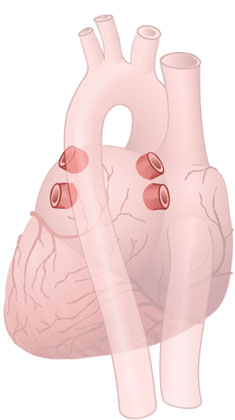
Pulmonary Veins: Blood vessels that carry oxygenated blood from the lungs to the heart.
Superior Vena Cava
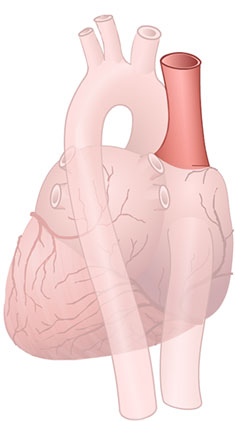
Superior Vena Cava: A large vein that delivers deoxygenated blood from the upper body into the heart.
FRONT VIEW
BACK VIEW
Blood Supply
All contents copyright © 2015, University Health Network and SickKids. All rights reserved.